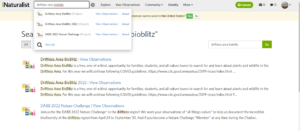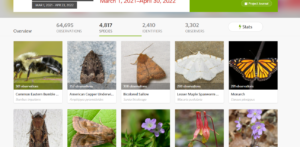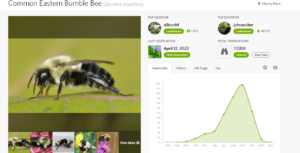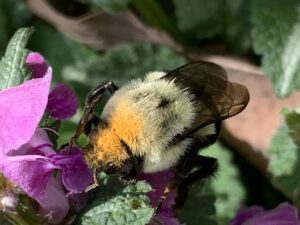Using iNaturalist to View Diversity
Welcome back all! This week we are going to learn how to use iNaturalist to view diversity in certain areas. We will be focusing on the driftless region by using data collected from the 2021 Driftless Area BioBlitz! To start, open your iNaturalist account on your desktop of smartphone. Then, go to “Projects”. Next, search “Driftless Area BioBlitz” and click on our project! You should see a page full of beautiful plants, insects, and animals. At the top of the page, it shows the number of observations made (over 64,000!), how many species have been observed (almost 5,000), and how many people are making the observations. Today, we are focusing on the number of species, as this helps us see the diversity in our area!


When you click on “Species” you can see all the species that have been observed in the driftless region over the past year. The top observation is the Common Eastern Bumble Bee or Bombus impatiens. When you click on the image of the bumble bee, it takes you to a page that shows you all kinds of information on the species. This includes: their taxonomy, distribution, peak seasons, and more.




The Common Eastern Bumble Bee is the most common species of bumble bee in North America, specifically the eastern region. What is interesting with these bumble bees is that the queen rises from hibernation in the spring and is on the hunt for a new location to begin her colony. So, if you see a bumble bee early in the spring, it is most likely a queen! Also, do not be afraid because they are tame when they are not protecting their nests and do not typically sting when pollinating. This particular species of bumble bee is seen as one of the most important bee pollinators in North America, because they have a wide range where they can survive and pollinate.
I hope this quick demonstration search showed you how you can utilize iNaturalist to not only learn about the diversity in our area but also how to find interesting facts on species we observe. Now let’s see who can observe the most Common Eastern Bumble Bees this year!
Happy exploring!
Emma
Upcoming Events:
Earth Fair: Spotlight on Nature Event Series Launch
Nature Challenge begins